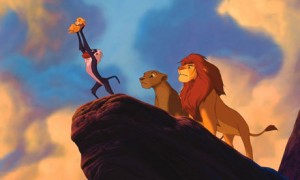
A gradual but inevitable descent into cricket-based loathing and bile.
The End Of An Era? Bollocks.
Since 51allout started infringing photographic copyright and plagiarising Wikipedia back in 2011, we have had to bid farewells – fond or otherwise – to a whole bunch of players. Graeme Smith is the latest in an impressive line-up. This inspired us to look at the trend of players reaching the end of their career. Basically, do these retirements represent the end of an era? Or is it part of an ongoing cycle?

Through despair and hope; through faith and love; till we find our place; on the path unwinding; in the circle; the circle of cricket.
The first point to make is that three years is not as short a period of time as it seems. We’re getting old and time rushes by. So it’s not as if Smith retired a few weeks after Strauss, even though it feels like it. The period from 1990 to 1992, for example, was the same length of time, but to kids – as we were – the years stretched out like a big yawn.
Having said that, for Boucher, Ponting and Dravid to retire in the same calendar year deserves attention – three undisputed legends (nb: Boucher was forced to retire) taking their curtain call. Likewise Tendulkar and Kallis in 2013.
In trying to devise some sort of system, we plotted the final Test matches of the 252 players who have played at least 50 caps. What this shows most is the sheer volume of cricket now compared to the past. It also shows that in deep history, clusters of retirees were less common (albeit some players with fewer than 50 caps deserve to be considered ‘great’ more than the likes of Mark Ramprakash or Ashwell Prince). Between 1970 and 1990 there were still generally no more than a few ‘legends’ retiring at the same time – although 1984 saw Lillee, Chappell, Willis and Marsh all play their final Test. Casting an eye upwards, chronologically speaking, you begin to see more names appear.
The rapid decline of West Indian cricket is also marked, with 1991 seeing Greenidge, Richards, Marshall, Dujon and Logie all reaching the end of their careers, presumably due to the humiliation of being bowled out by Phil Tufnell. Thereafter, there are regular years of great extinction. In 1992: Botham, Gower, Shastri and Imran Khan. In 1995: Gooch, Crowe and Richardson. In 1997: Rameez Raja. And then just about every year in the 00s saw a superstar bugger off to the golf course.
So 2014 saw the end of Graeme Smith; the two remaining great Sri Lankans will likely retire fairly soon, Chanderpaul surely can’t keep on going, and more will follow – what the recent years have reminded us is that the end comes quicker than expected (apart from Shiv of course). But the exciting thing is that as players depart, new ones arrive. In the aforementioned 1992, Test debutants included Warne, Flower and Donald. 1996? Gibbs, Gillespie, Ganguly and two others not beginning with G (Dravid and Laxman).
Looking backwards, players who debuted in 2006, 2005 and 2004 have won at least 100 Test caps. Indeed, the last years that saw no player debut who went on to reach that landmark were 2003, 1999 (although it did have Vaughan, Dilshan and Gilchrist all first appear) and before that 1986. And as one player goes, someone like AB de Villiers or Virat Kohli or Trent Boult steps up to show they are capable of being pretty fucking ace themselves.
So join us in 2023 to see which of Scott Borthwick or Boyd Rankin has made the grade as a 100-cap cricketing icon.


1 Comment
Post a Comment
1
Milad
12 Mar 2014 21:11
Guys, KP’s last Test was this year, not 2013